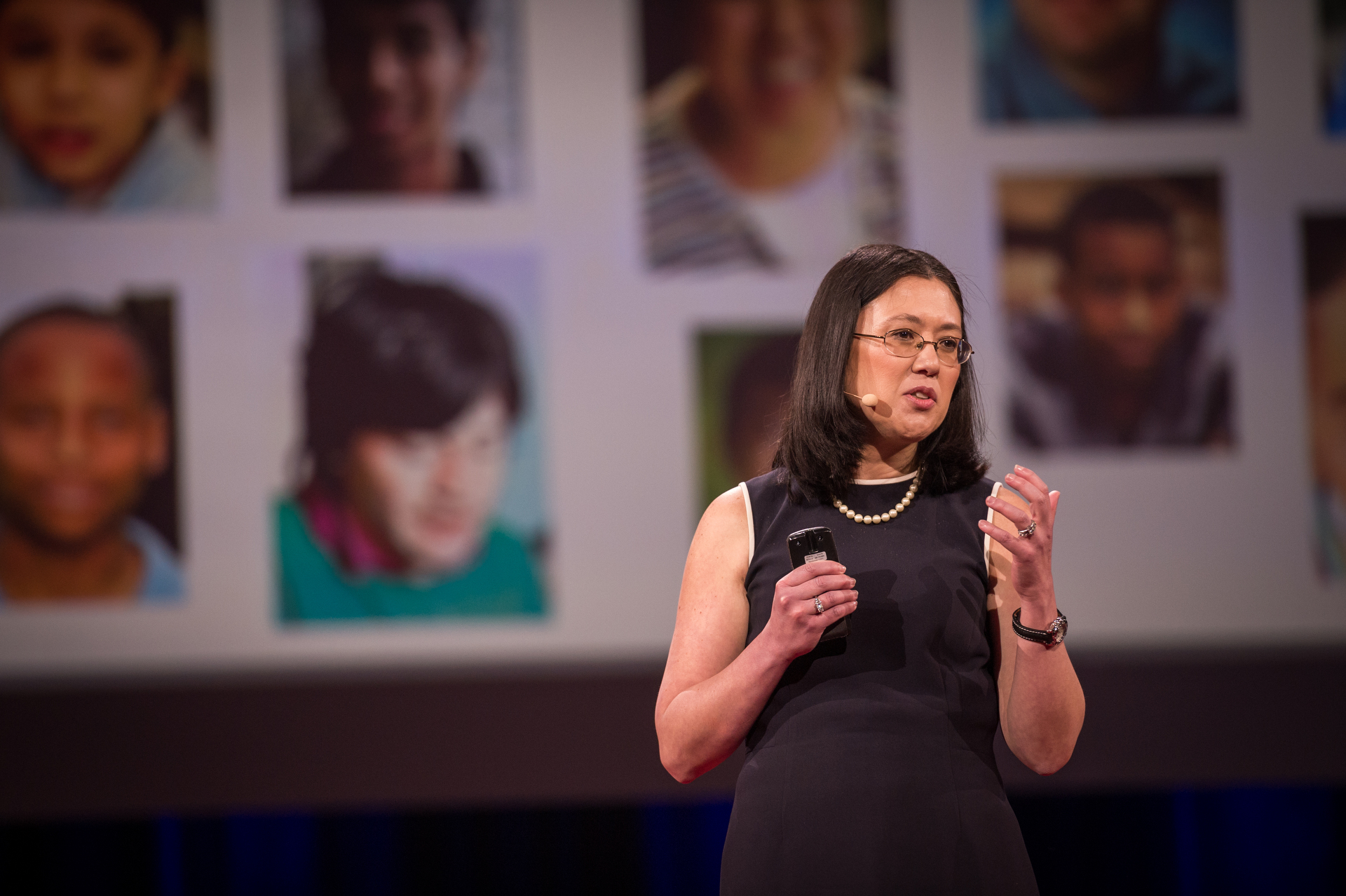Wendy Chung of the Simons Foundation Autism Research Initiative says that she is constantly asked the same question by parents: “Why does my child have autism?” It’s a question that plagues them whether their child has a severe form of autism, to the point of being non-verbal, or a mild one.
“Autism isn’t a single condition. It’s actually a spectrum of disorders,” says Chung. “And like it is a spectrum of disorders, it has a spectrum of causes.”
1 in 88 children is diagnosed with autism. But while it’s often called an epidemic, Chung isn’t so sure that it actually meets the criteria. She shows a graph of the number of diagnoses of autism spectrum disorder per year, and there does indeed appear to be a strong curve upwards, with the bars in recent years towering over those in the past. But this difference could be explained by an equally steep uptick in diagnosis. In the 1990s, explains Chung, there was a big increase in autism awareness, and more doctors, teachers and parents learned to recognize the features of autism. At the same time, says Chung, “We’ve changed our definition—in fact we’ve widened it.”
And from here, Chung takes us on a tour of what we do and don’t know about autism. To start, some things we know:
- First, vaccines do not cause autism. Here, Chung does not mince words: The study that suggested vaccines were related to autism was fraudulent, and its author has had his medical license stripped.
- Second, we know that autism is not equal opportunity—it occurs in boys more than girls, at a ratio of 4:1.
- Third, autism has a few clear association factors, including having a father of advanced age or a mother who took certain medications (including valproate) while pregnant.
We also know that genes can cause autism. While they’re certainly not the only cause, genes play a larger role in autism than they do in cancer, heart disease or diabetes. For identical twins, if one sibling has autism, there is a 77% probability that the other will develop it too. For fraternal twins, it’s 31% probability, and for siblings, it’s a 20% probability. Notice that the concordance rate for identical twins isn’t 100%. That is meaningful, as they share both the same DNA and fetal environment.
“For some individuals, autism is GENETIC—they have one single, powerful deterministic gene that causes autism,” says Chung. “And in others, it’s genetic and caused by a combination of genes and other factors.”
She gives us a brain teaser. “With certain individuals, they have autism for a reason that is genetic but not because it runs in the family.” For these children, there’s a genetic mutation that starts with them—there’s a new, de novo mutation that began in the egg or the sperm (possibly both). Chung makes an analogy to an encyclopedia. Genetic information comes in 46 volumes and, in some cases, a single volume is missing. In other cases, in one of those volumes a single paragraph is missing, or even a single letter. She says, “1 out of 3 billion was altered, but it had profound effects on how the brain functions and affects behavior.” These de novo genetic disorders now account for 25% of cases of autism.
So, what are these genes? That we know … kind of. “We’ve realized there’s not one gene for autism. There are 200 to 400 different genes that can cause autism,” she says. “That explains why we see such a broad spectrum.” But these 200 to 400 genes aren’t random—many of them are genes that work together on specific pathways and systems. Understanding how they work together, and how those interactions happen molecule by molecule, will be the key in understanding how to treat autism and help people on the spectrum live their best lives.
Another key: early detection. “Diagnosing autism in the window where we have the time to impact that growing, developing brain is critical,” says Chung. And we can now start with babies. She introduces us to a tool that uses eye tracking to identify babies at risk for autism. The tool measures their eye movement as they watch a video of a person speaking. If the baby has trouble making eye contact with the face on the screen, he or she is more likely to develop autism.
Chung and other scientists working in this space hope to develop medications to modulate genes and help with brain function. But Chung stresses that much of the work here will involve developing educational strategies for children with autism as they grow. Chung says, “They learn and absorb their surroundings in a different way, and we need to be able to educate them in a way that serves them best.” Chung could imagine a technique using Google Glass and a social coach, who can whisper to a teenager through an earpiece and help them start a conversation or even ask someone out on a date.
“As much as we know, there is so much more that we don’t know,” says Chung. Much more research is needed — and information sharing. She invites all people affected by autism spectrum disorder to join the Interactive Autism Network.
“It is going to take a lot of us to think about what is important — to use, as a community, our collective wisdom to be able to make a difference,” says Chung. “We’re going to need individuals of all ages.” She pauses. “I invite all of you to join the movement to make life for people with autism so much better and richer.”

Comments (8)
Pingback: 5 Important Things We’ve Learned About Autism - The Vitals Blog
Pingback: Video Resources for Understanding Autism | Trajectories
Pingback: Prominent Geneticist, Researcher and Pediatrician shares Findings on Causes for Autism - Raising Autistic Kids
Pingback: AnneDachel.com » Blog Archive » Autism Speaks: Dr. Wendy Chung says vaccines don’t cause autism—really they don’t!